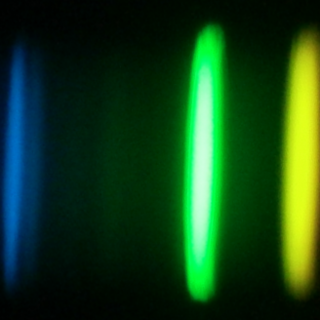Bibcode
Mészáros, Szabolcs; Masseron, Thomas; García-Hernández, D. A.; Allende Prieto, Carlos; Beers, Timothy C.; Bizyaev, Dmitry; Chojnowski, Drew; Cohen, Roger E.; Cunha, Katia; Dell'Agli, Flavia; Ebelke, Garrett; Fernández-Trincado, José G.; Frinchaboy, Peter; Geisler, Doug; Hasselquist, Sten; Hearty, Fred; Holtzman, Jon; Johnson, Jennifer; Lane, Richard R.; Lacerna, Ivan; Longa-Peña, Penelopé; Majewski, Steven R.; Martell, Sarah L.; Minniti, Dante; Nataf, David; Nidever, David L.; Pan, Kaike; Schiavon, Ricardo P.; Shetrone, Matthew; Smith, Verne V.; Sobeck, Jennifer S.; Stringfellow, Guy S.; Szigeti, László; Tang, Baitian; Wilson, John C.; Zamora, Olga
Bibliographical reference
Monthly Notices of the Royal Astronomical Society
Advertised on:
2
2020
Citations
139
Refereed citations
133
Description
We investigate the Fe, C, N, O, Mg, Al, Si, K, Ca, Ce, and Nd abundances of 2283 red giant stars in 31 globular clusters from high-resolution spectra observed in both the northern and Southern hemisphere by the SDSS-IV APOGEE-2 survey. This unprecedented homogeneous data set, largest to date, allows us to discuss the intrinsic Fe spread, the shape, and statistics of Al-Mg and N-C anti-correlations as a function of cluster mass, luminosity, age, and metallicity for all 31 clusters. We find that the Fe spread does not depend on these parameters within our uncertainties including cluster metallicity, contradicting earlier observations. We do not confirm the metallicity variations previously observed in M22 and NGC 1851. Some clusters show a bimodal Al distribution, while others exhibit a continuous distribution as has been previously reported in the literature. We confirm more than two populations in ω Cen and NGC 6752, and find new ones in M79. We discuss the scatter of Al by implementing a correction to the standard chemical evolution of Al in the Milky Way. After correction, its dependence on cluster mass is increased suggesting that the extent of Al enrichment as a function of mass was suppressed before the correction. We observe a turnover in the Mg-Al anticorrelation at very low Mg in ω Cen, similar to the pattern previously reported in M15 and M92. ω Cen may also have a weak K-Mg anticorrelation, and if confirmed, it would be only the third cluster known to show such a pattern.
Related projects

Nucleosynthesis and molecular processes in the late stages of Stellar Evolution
Low- to intermediate-mass (M < 8 solar masses, Ms) stars represent the majority of stars in the Cosmos. They finish their lives on the Asymptotic Giant Branch (AGB) - just before they form planetary nebulae (PNe) - where they experience complex nucleosynthetic and molecular processes. AGB stars are important contributors to the enrichment of the
Domingo Aníbal
García Hernández

Chemical Abundances in Stars
Stellar spectroscopy allows us to determine the properties and chemical compositions of stars. From this information for stars of different ages in the Milky Way, it is possible to reconstruct the chemical evolution of the Galaxy, as well as the origin of the elements heavier than boron, created mainly in stellar interiors. It is also possible to
Carlos
Allende Prieto